a raised-bed garden survives ‘killer compost’
‘WE ALL MAKE MISTAKES,’ public-TV host Joe Lamp’l of “Growing a Greener World” said when we chatted on my radio show. Oh, isn’t that the truth. Thankfully the misstep Joe revealed—how he fell prey to “killer compost” that contained persistent herbicides—was offset by a look at the most enviable of vegetable-garden designs. How to build the ultimate raised-bed garden (wait until you see Joe’s new layout!) and how to avoid inadvertently bringing in compost or compost ingredients that can do more harm than good. A hint: Animal manures can be tricky business.
joe lamp’l’s new garden plan
IT WAS TIME for “Growing a Greener World” to have a home “set” for some of its episodes, and Joe’s Atlanta farm was the perfect site. A total of 16 big raised beds—most of them 4 feet by 12 feet by 18 inches high, arranged in an area that’s 74 by 40—were fashioned of untreated cedar 6-by-6’s (photo up top). Paths of 4 feet were left between most beds (with a bit more clearance between the outer beds and the perimeter deer fence). So far, so good.
You can see the entire design and build on this episode of “Growing a Greener World.” Prepare to be jealous—and inspired. (You can also watch my guest appearance on the show in this episode!)
Tubing for a drip-irrigation system was installed before the beds were filled with 80 percent soil and 20 percent compost. And that’s when things took a bit of a wrong turn, at least temporarily.
the ‘killer compost’ phenomenon
AS WITH MOST garden bloopers—my many ones over the years included–trying to hurry things along caused this one, Joe says.
In his haste to get his new garden going in the spring, he eyed “the massive manure pile” contributed to by his horses, goats and chickens (that’s Joe with one of them, above). What he saw was a source of potential soil amendment—seemingly perfect material to mix with the carefully selected topsoil he’d be bringing in to fill most of each of those new beds.
Except for one thing—one thing he knew about, but pushed out of his mind.
“I’m aware of the potential hazards of using manure to amend garden soil,” he wrote in a recent story about “killer compost” (read it at this link—a real eye-opener). “I had been warning people as I speak around the country about this possibility,” says Joe, a frequent lecturer and writer, in addition to his TV role.
“Some herbicides used to control weeds in farm fields persist for a very long time.” Even worse, they don’t readily break down, even as composted manure. But, he says: “I talked myself into it—and into the garden beds it went.”
After incorporating the composted manure, Joe planted tomatoes and other vegetables. Pretty quickly, the plants didn’t look right: cupping of their leaves, and what he describes as “no apical dominance” (no clear lead growing point moving in the right upward direction, and the side shoots trying to take over).
He knew right away what had happened: Persistent herbicides on the fodder he’d fed his animals had made it through the compost process. He quickly confirmed with his hay supplier, who like other farmers had indeed used the chemicals to rid his fields of broadleaf weeds.
The manufacturers formulated these chemicals to last a long time, to offer farmers multiple seasons of protection against the broadleaf weeds.
“The composting process isn’t going to break it down,” says Joe, who adds: “The process takes from months to several years,” and is probably slower in the compost heap, an anaerobic environment. Yikes.
avoiding ‘killer compost’
KILLER COMPOST resulting from persistent herbicides is not a new phenomenon. The United States Composting Council says:
“We are specifically concerned with the relatively new class of herbicides called ‘pyridine-carboxylic acids’. They are typically designed for use in hayfields, horse pastures, golf courses, right-of-ways, and lawns to kill off unwanted weeds and to remain effective for several months to years. These herbicides do not impact grasses.
“There are a number of compounds that fall into the category of persistent herbicides. The most prevalent are Clopyralid (Dow Agrosciences), Aminopyralid (Dow Agrosciences, 2005), Aminocyclopyrachlor (DuPont, 2010), and Picloram (Dow Agrosciences). Less prevalent compounds in the same class include fluroxypyr, dopyralid, and triclopyr. Many of these compounds appear on labels in slightly different variations making identification by the untrained applicator or a testing lab difficult.”
Joe’s hay source had used Grazon, specifically, a trade name for a product containing Picloram.
joe’s plan to remediate his soil
JOE LAMP’L began right away to try to undo the lingering effects of the herbicides. Everyone said to remove all the soil, but that seemed a heroic task—financially and labor-wise.
He instead turned the soil (to expose the remaining compounds to sunlight and more oxygen, to help speed the process of decomposition). He planted cover crops, and though conventional wisdom about this says you need to pull them (because they would have absorbed some of the residue), he’s turning his “green manure” in to add bulk and hopefully offset the residues.
He is already seeing improvement: later crops did much better.
His best advice, though: Take a moment! Ask before you bring in any raw materials that may have been sprayed with persistent herbicides–manures, hay bales, bagged grass clippings from uncertain sources. Prevention is easier than the long process of remediation. More help:
- Read Joe Lamp’s full report on his “killer compost” experience.
- Read more about persistent herbicides on the Composting Council website.
- Learn to make compost in this “Growing a Greener World” episode.
- Watch the episode about how the team built Joe’s amazing new raised-bed vegetable garden.
joe lamp’l visits my garden: watch us!
JACK AND I AND OUR GARDEN were the subject of an episode of the “Growing a Greener World” public-television program. I hope you will watch–and share the link after you do. Watch Joe’s visit to our place now. Read his behind-the-scenes account of our two days together.
prefer the podcast version of the show?

(All photos courtesy of Growing a Greener World television.)


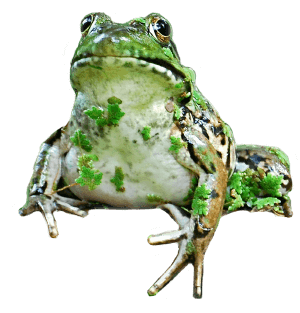
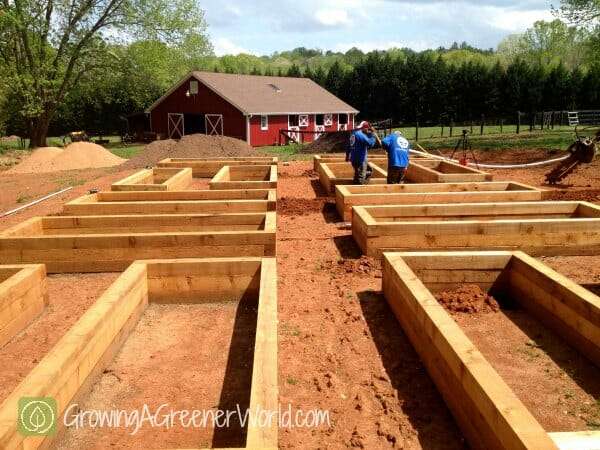
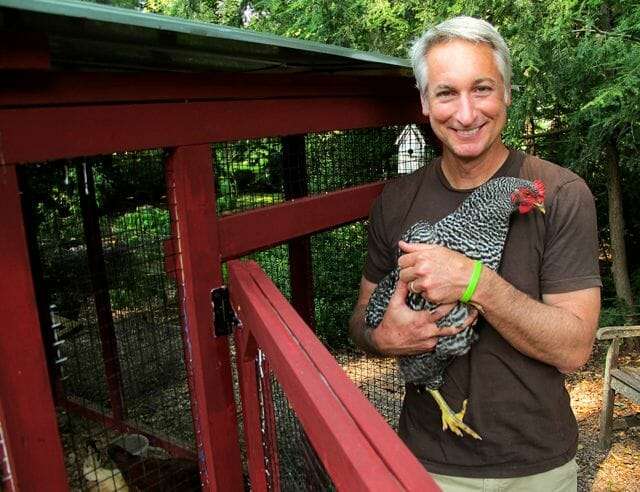
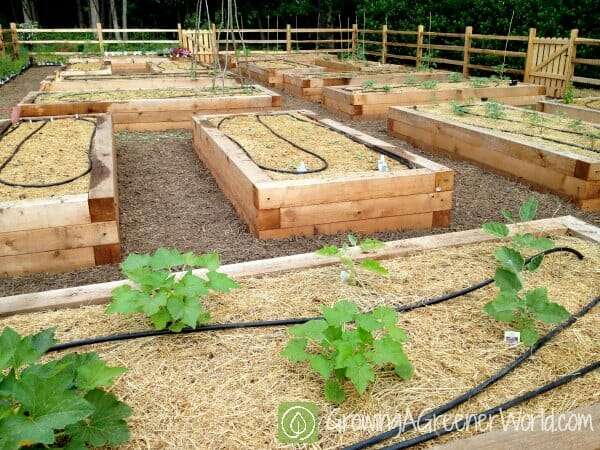
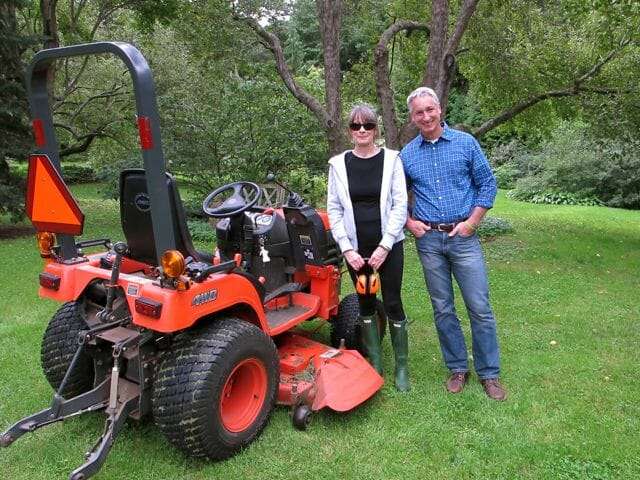


I bought 6 yards of what turned out to be killer compost last year when my friend rebuilt my raised beds, thinking I was doing a good thing. I’m still paying the price. At the end of last season, I had no dahlia tubers in the large bed that I amended with the stuff; however, those tubers that had been planted in old soil in another garden location were fine. Veggies were also not as productive, but I blamed it on the woodchucks. It’s good to know that other experienced gardeners have made a similar mistake. Only my own compost from here on in!
I am trying to reclaim a small area so I can actually have a patch I can call a garden again as apposed to a brush lot with remaining naturalized daffodils, Galanthus, and, a few patches of Aconite, Epimidium, and daylillies and I am having anxiety attacks about using municipal compost because of herbicides even though it’s supposed to be tested here–and part of a new project to use market vegetable waste. I’m also afraid of straw; do they use herbicides in grain fields? If I had the time I would prefer a couple years of cover crops sown and turned but I might be eighty before the soil shaped up. I thought of straw bale beds for a year and then turn them under but the thought of herbicides again rears it’s head as does buying a load of horse manure. Maybe I’ll just plant peas and beans!————————-Weedy
Amazing!
Chilling, isn’t it, Arthur? I am always so careful in what I bring in as amendments, trying to keep it to almost nothing…and now I am extra-glad!
Oh dear. I’ve used our own compost (from our barnyard manure) on the fruit and vegetable beds for years. But it occurs to me now that we buy the hay for our horses from a local rancher and have no idea what he puts on his fields. Gulp. I am going to find out!
I just put down a 6-inch layer of hay for mulch on my garlic beds per the recommendation of an urban garden enthusiast in my city. Now I’m worried. If I can’t verify that the hay is clean, what should I do? I don’t want to leave it on the beds if it’ll cause problems in the future! Any suggestions if I can’t get confirmation that it’s clean?
Our first garden did great this year with the compost from our horse barn but someone said the wormer ( Ivermectin ) we gave our horses was bad for the garden & the worms in the garden.Is that true?
Hi, TBar. I have read so many different things about this — but what every article seems to say is that exposing the manure to sunlight and composting it “hot” and thoroughly before using it in the garden helps the material break down. I see that SARE gave a grant in 2012 for exploration of this (at an alpaca farm in CT) but I don’t see the results, and most other articles are a few years old. So I wrote to the farmer who got the grant to see what came of it…
I think I had a little of this on a new bed from our city’s compost site. Time and better soil added made the difference. Amazing that we can create things that won’t break down.
I have not heard of this before. I really wonder how prevalent this would be in commercially obtained compost? I am also concerned about how this issue will impact the landscape industry in the coming years.
Dupont’s disaster with IMPRELLIS which was one of those herbicides promised to to have season long weed control but had the unfortunate side effect of killing Norway spruce and white pines could have been a disaster if it took a bit longer to kill them or only stressed them. Cut grass with this stuff on it, compost it, spread it around your landscape and stress those conifers so more succumb to Cytospora canker, pine wilt, etc. If it’s symptoms were milder Imprelis® would probably be used everywhere by now.
The Imprelis® label prohibits the use of clippings for mulch or compost. How many homeowners do you think would not put out their lawn bags to be picked up because it had been treated with Imprellis?
Oh wait there is more, the trees that DuPont killed can under no circumstances be used for mulch or compost or disposed of in facilities that would turn it into compost or mulch (e.g., recycling) according to DuPont. So off to the landfill for all those spruces and pines. See https://imprelis-facts.com/ for more info.
I was not an anti-chemical type when I switched careers and started my Horticulture career at a top public Japanese garden. Every year though I learn more and more reasons why 100% organic garden care is where I have to end up.
The demands of my current position makes that not 100% possible now (thanks Scotch Pine’s Brown spot needle blight, Pine wilt, etc.), but I have made strides in switching us to organic lawn care & fertilizers, insecticidal soap, horticultural oils, biological controls, etc. My own personal yard was chemical free in 2013.
Thanks for the informative article and corresponding podcast and thank Joe Lamp for sharing his mistake so we could all learn from it.
I saw on the Violet Fern Blog Facebook page that you were on Joe’s Show so I immediately went to PBS, found the show and watched it. You should watch the whole thing. You and Jack look great and you were so natural. You did good.!!!! Kathy, Joe and you are all my favorites.. It’s nice when all three of my favorite garden media come together. Keep up the great blog and pod casts.
Hi, Elayne, and thank you very much! I am honored to be in your triumvirate (and I will tell Jack he got the seal of approval, too). :)
:)
“I was not an anti-chemical type when I switched careers and started my Horticulture career at a top public Japanese garden. Every year though I learn more and more reasons why 100% organic garden care is where I have to end up. ”
Way to go Jim. I think more people should think about this even if horticulture is not their career.
I just listened to this podcast and it was so informative. We recently moved to Northern California and put in new garden beds. We had some soil delivered from the “Soil Broker” who said his soil is excellent and organically sourced. I will encourage him to listen to this podcast. What perfect timing. I have always tried to keep our gardening organic, but even in the organic world we have to be cautious and informed. Thank you Margaret for your EXCELLENT website, your enthusiasm, humor, knowledge, and the guests you choose for your program. Happy Autumn!
We have just finishing our first growing season in a new raised bed garden at our church in northern NJ. We’ve had a great “above ground” harvest using good top soil and chemical free compost, no insecticides or other fertilizers. The “below ground” crops, however, did not develop well., Radishes were long and crooked, beets didn’t develop (greens were great, tho), onions didn’t grow, turnips didn’t develop, but good greens. Any suggestions what we did wrong?
If the manure did that to new growing plants – imagine what it did to the horses, chickens and other animals that ingested it before it became manure! I always say, dont spread anything on your garden that you wouldnt want sprinkled in your cereal.
Excellent article and I plan on watching the Podcast as well. We’ve been gardening using organic methods for over 30 years and were about to get manure from a neighbor when I happened to a see and article about this issue. When my DH inquired about the use of pasturage herbicides he learned the neighbor was using this stuff. So we took a pass on the manure and added additional “green manure” sources to our land. Whew, near miss there.
Hi, Catherine — scary, isn’t it? And yes: near miss! Glad to hear you escaped unharmed.
Thank you, Margaret, for another informative and eye-opening article. As I read through it, I was thinking exactly what Jayne said in the comment above mine. The most frightening thing about this whole horrific ordeal is that these toxic herbicides came out of the animals intact.
I am so grateful we are able to put up our own organic hay here on our Missouri farm. And you know what? The sheep and donkeys LIKE the weeds. We call our fields ‘mixed salad’ because of the variety of native grasses and weeds that grows in them, and I think it’s better for the animals to eat as many different things as they can. This variety also makes our pastures less susceptible to damage from drought, insects, etc.
@weedyseedy – Yes, toxic chemical herbicides are usually used on commercial grain fields (along with chemical fertilizers, etc.). As our organic fertilizer supplier once told me, “The cleaner the straw, the more chemicals that were sprayed on it.”
Whew, another near miss.
Only because I ran out of time a couple of weeks ago while I was amending the soil in my new raised garden,did I not go to my neighbors pasture to gather the manure from their cows and donkeys.
Glad I had a rainy day to catch up on my Growing a Greener World , if not I would not of had the opportunity to read these articles and avoid a potential disaster.
THUMBS UP GUYS AND THANKS.
Hi, Rhonda. Glad that you were a little late on scooping up that you-know-what! :)
Picloram – our County sprayed this along roadways to prevent weeds etc.. About 1-1 1/2 years later trees next to the roadways started to die. In doing soil tests it was confirmed to be the Picloram. It even contaminated wells in the area. Our soil is pumice based so it flowed right into the wells and killed trees in it’s path…. While the County had good intentions, the Picloram wasn’t designed for use in our soil type.
What a terrible tale that is, Echo. Sorry to hear, but thank you for sharing it as a reminder to pay attention to such realities.
Some 8-9 years ago we had 2 incidents with horse manure. Nothing would grow for about 2 years where one pile sat. The 2nd time was from a different stable, and plants grew twisted for about 2 years where it had been applied. When I found out the cause, we got a couple of fainting goats to eat brush and hay from fields with real weeds in them. The heavy red clay on our property really made manure important to get some life and organic matter into the soil. Certainly we’ve made compost piles without manure, but I like to think of the goats as walking compost piles. One thing that makes it a bit easier is that every year we move the goat pen to a different part of the garden. Saves hauling manure, and I can plant my winter squash near the edge of the current pen. The hay at the feed stores is all quite free of weeds or clover, so I won’t buy it. I no longer buy a bale of hay each fall for our doghouses, they sleep on weedy hay.